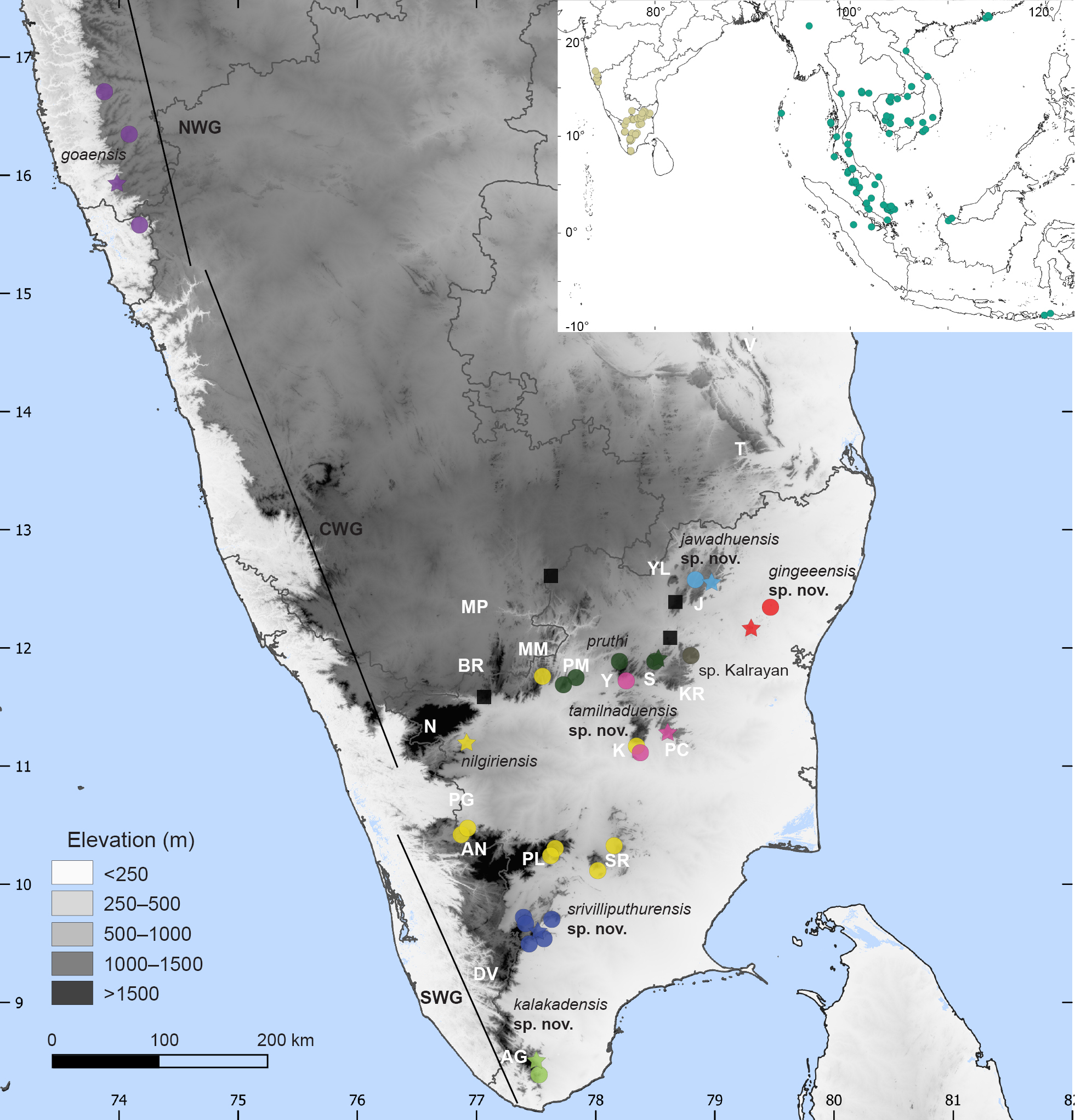
|
||
|
Elevation map showing sampling localities from peninsular India. Stars indicate type localities (neotype locality shown for Dravidoseps goaensis comb. nov., original type locality is close to the southernmost point), light blue D. jawadhuensis sp. nov., dark blue D. srivilliputhurensis sp. nov., light green D. kalakadensis sp. nov., dark green D. pruthi comb. nov., red D. gingeeensis sp. nov., yellow D. nilgiriensis comb. nov., pink D. tamilnaduensis sp. nov., and grey, D. sp. Kalrayan (colour scheme representing species is the same as Figs 3–6), black squares unsampled previously known localities. The approximate extent of the Central Western Ghats (CWG), Northern Western Ghats (NWG), and Southern Western Ghats (SWG) are shown; major hill ranges and features are marked by bold white text, within the Western Ghats: AG, Agasthyamalai; AN, Anaimalai; DV, Devarmalai; N, Nilgiris; PG, Palghat Gap; PL, Palani; and outside the Western Ghats: BR, Biligirangan; J, Jawadhu; K, Kollimalai; KR, Kalrayan; mm, Male Mahadeshwara; MP, Mysore Plateau; PC, Pachaimalai; PM, Palamalai; S, Sitteri; SR, Sirumalai; T, Tirupati; V, Velikonda; Y, Yercaud; YL, Yelagiri. Inset, global distribution of Dravidoseps gen. nov. (brown) and Subdoluseps sensu stricto (green). Dravidoseps goaensis = Riopa goaensis (see main text). |